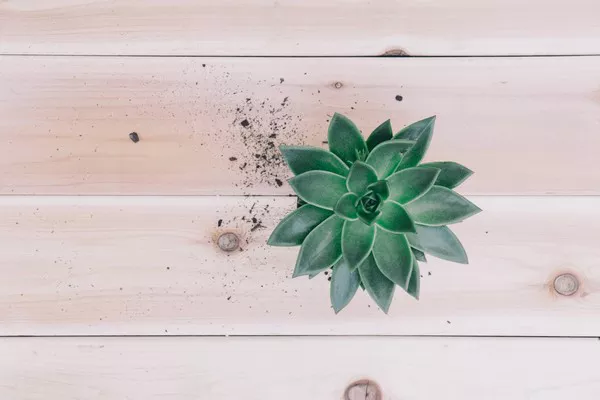The world of succulents offers a captivating array of shapes, colors, and textures, making them a favorite among plant enthusiasts. One of the most rewarding aspects of succulent care is the ability to propagate new plants from clippings, allowing you to expand your collection or share these resilient beauties with friends.
Selecting Healthy Succulent Clippings
The journey of rooting succulent clippings begins with selecting the right plant material. Choose healthy succulents with plump leaves and vibrant colors. Look for mature leaves that are free from damage or disease. Gently twist or cut the leaves from the main stem, ensuring you have a clean break. Depending on the succulent species, you can propagate using individual leaves or cuttings of stems. The key is to choose succulent clippings that are free from signs of stress or dehydration.
Preparing Succulent Clippings for Propagation
Once you have your succulent clippings, the next step is to prepare them for propagation. Lay the clippings on a clean surface and allow the cut ends to air dry. This step is crucial as it allows the cut ends to callus, reducing the risk of rot when the clippings are placed in the growing medium. Depending on the humidity in your environment, this process may take a day or two. Ensuring that the cut ends are thoroughly callused is essential for successful rooting.
Choosing the Right Growing Medium
Selecting the appropriate growing medium is vital for the successful rooting of succulent clippings. A well-draining mix is crucial to prevent waterlogged soil, which can lead to rot. Consider using a specialized succulent or cactus mix or create your own by combining potting soil with perlite, pumice, or sand. The goal is to create a lightweight, airy medium that allows for optimal drainage and aeration. Fill small pots or trays with the chosen growing medium, providing a suitable environment for the succulent clippings to root.
Planting Succulent Clippings
Once the succulent clippings have callused, it’s time to plant them in the chosen growing medium. If you are propagating succulents from leaves, lay the leaves on the surface of the soil, positioning them with the callused end in contact with the growing medium. For stem cuttings, insert the cut end into the soil, ensuring that it is secure and stable. Gently water the soil around the clippings to settle it, but avoid saturating the growing medium.
Providing the Right Growing Conditions
Creating the right growing conditions is essential for the successful root development of succulent clippings. Place the planted clippings in a location that receives bright, indirect sunlight. Succulents thrive in well-lit environments, but direct sunlight, especially during the hottest part of the day, can lead to sunburn. Maintain a consistent temperature, ideally between 65°F to 75°F (18°C to 24°C), to encourage healthy root formation.
Watering Succulent Clippings Wisely
Proper watering is a crucial factor in the rooting process of succulent clippings. While it’s essential to keep the soil slightly moist, overwatering can lead to rot and other issues. Water the clippings sparingly, allowing the soil to dry out between waterings. A common mistake is mistaking the need for moisture when it’s actually the callused end of the clippings that requires a dry environment for successful root development.
Patience: Allowing Time for Root Development
Successful succulent propagation requires patience, as rooting times can vary depending on the succulent species and environmental conditions. On average, it takes a few weeks to a couple of months for succulent clippings to develop roots. Avoid the temptation to disturb or check the roots prematurely, as this can hinder the process. Once you start noticing the growth of roots, it’s an indication that the succulent clippings are establishing themselves and can be considered for transplanting.
Transplanting Rooted Succulent Clippings
When the succulent clippings have developed a healthy root system, it’s time to consider transplanting them into individual pots. Gently lift the rooted clippings from their original container, taking care not to damage the fragile roots. Transfer each rooted succulent into its own pot, filled with a well-draining succulent mix. Water the transplanted succulents sparingly, allowing the roots to adjust to their new environment.
Caring for Newly Rooted Succulents
Newly rooted succulents require specific care to ensure their continued growth and well-being. Gradually introduce them to slightly brighter sunlight, acclimating them to outdoor conditions if they were initially propagated indoors. Continue to water sparingly, adjusting the frequency based on the specific water needs of the succulent species. As the succulents mature, you can gradually transition to a regular watering schedule based on their individual requirements.
Troubleshooting Common Issues
Throughout the process of rooting succulent clippings, it’s essential to be vigilant for signs of potential issues. Overwatering is a common pitfall, leading to root rot and other complications. If the succulent clippings appear mushy or discolored, it may be an indication of overwatering. Adjust your watering practices accordingly and ensure that the growing medium is well-draining. Additionally, monitor for pests or diseases and address them promptly to prevent further damage.
Propagating Succulents from Offsets and Pups
In addition to rooting clippings, many succulent species produce offsets or pups – small, genetically identical shoots that emerge from the base of the plant. These offsets can be carefully separated from the parent plant and rooted in a similar manner to clippings. This method allows you to propagate multiple plants from a single succulent, expanding your collection or sharing them with fellow succulent enthusiasts.
Conclusion
Rooting succulent clippings is a rewarding and accessible way to expand your succulent collection or share the joy of these resilient plants with others. By selecting healthy clippings, providing the right growing conditions, and exercising patience throughout the rooting process, you can witness the transformation of tiny leaves or stems into flourishing succulents. Whether you’re a seasoned succulent enthusiast or a novice gardener, the journey of succulent propagation offers a hands-on and fulfilling experience in nurturing life from the tiniest of cuttings.


